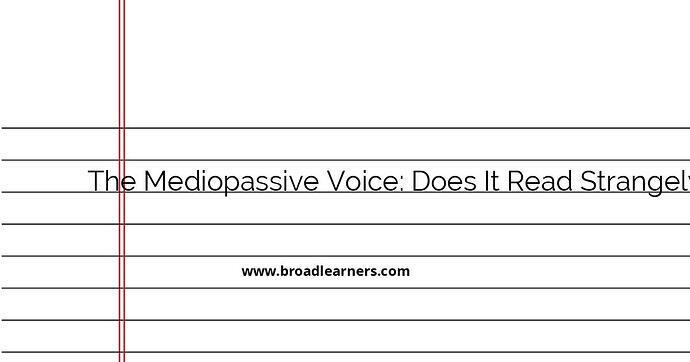The English language, like many others, has a variety of voices that can be used to convey different nuances and meanings. One such voice is the mediopassive voice, which might sound unfamiliar or strange to those who primarily use active or passive constructions. This article aims to delve into the concept of the mediopassive voice, providing an in-depth understanding for those who are new to this linguistic feature.
What is the Mediopassive Voice?
The mediopassive voice combines characteristics of both the middle voice and the passive voice. It is often used to describe actions that reflect back on the subject or where the subject is both the doer and receiver of the action. This usage can sometimes read strangely to those unfamiliar with it, as it does not clearly fit into the active or passive categories we are accustomed to.
In essence, the mediopassive voice helps convey actions where the distinction between an action being done by the subject and to the subject is blurred.
Examples of the Mediopassive Voice
Let's explore a few sentences where the mediopassive voice is employed, along with alternative constructions for clarity:
- The door opens easily.
- This sentence suggests the door has the capacity to open by itself without external action, which can seem unusual. In an active voice, one might say, "Someone opens the door easily." However, the original mediopassive construction emphasizes the door's inherent quality of easy operation.
- The book sells well.
- In this example, the mediopassive construction refers to the book’s quality enabling it to be sold effectively without specifying who sells it. An equivalent active voice sentence might read, "The store sells the book well." However, the mediopassive emphasizes the book's appeal.
- The cloth washes easily.
- This sentence implies that the cloth’s nature allows it to be washed with minimal effort. A similar passive construction would be, "The cloth is washed easily." Yet, the mediopassive highlights the practical quality of the material.
The Role of Mediopassive Voice in Language
Mediopassive constructions can add an effective layer of meaning to a sentence by emphasizing qualities or attributes rather than actions done by someone specific. Although it might initially seem peculiar, mastering this voice enriches a speaker's or writer's expressive tools in English.
Caution for Beginners
While the mediopassive voice provides flexibility, beginners should take care to ensure its appropriateness within context. Overuse or misapplication can lead to ambiguity.
Conclusion
In summary, the mediopassive voice enables one to focus on inherent qualities and capacities within the subject rather than the action's executor. Whether we find this voice strange often depends on our familiarity and comfort with its nuances. Over time, comprehension and usage of the mediopassive voice can significantly enhance one's communication skills within the English language.
Did I miss anything? Respond below
